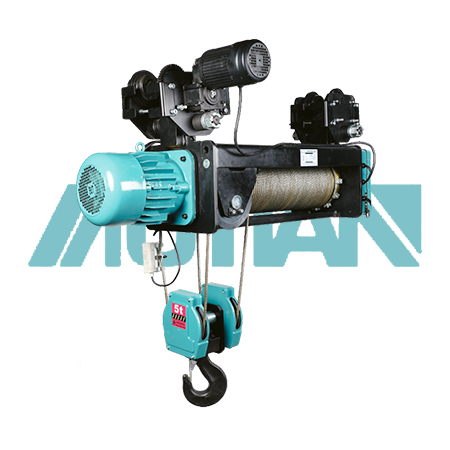 中文版
中文版



Welcome to contact us by phone:0086-0312-7969888
Running a wire rope electric hoist involves operating a device designed to lift and move heavy loads vertically and horizontally using a wire rope and an electric motor. These hoists are commonly used in various industries, including manufacturing, construction, warehousing, and logistics, due to their efficiency, versatility, and ease of operation.
Here's an introduction to running a wire rope electric hoist:
Safety Precautions: Before operating a wire rope electric hoist, it's crucial to familiarize yourself with safety precautions. This includes wearing appropriate personal protective equipment (PPE), ensuring the hoist is properly maintained and inspected, and understanding the weight limits and operational guidelines outlined in the manufacturer's manual.
Inspecting the Hoist: Before each use, visually inspect the wire rope, hooks, and other components of the hoist for any signs of damage or wear. Check for proper lubrication and ensure that all safety features, such as limit switches and overload protection devices, are functioning correctly.
Mounting the Hoist: Install the hoist securely on a stable structure or mounting point capable of supporting the weight of the load. Ensure that the mounting surface is level and free from obstructions. Follow the manufacturer's instructions for proper installation and attachment.
Attaching the Load: Carefully attach the load to the hook or lifting attachment of the hoist. Use appropriate rigging techniques and attachments, such as slings or lifting beams, to ensure the load is securely supported and balanced.
Operating the Controls: Most wire rope electric hoists come with pendant controls or remote control units for operation. Familiarize yourself with the control layout and functions, including hoisting, lowering, and traversing (if applicable). Exercise caution and precision when operating the controls to lift, lower, and position the load safely.
Lifting and Moving the Load: Use the hoist controls to lift the load vertically, taking care to avoid sudden movements or overloading. If the hoist is equipped with trolley or traversing mechanisms, use the controls to move the load horizontally as needed. Maintain clear communication with any personnel assisting in the operation to ensure safe and coordinated movement of the load.
Lowering the Load: When lowering the load, release tension gradually to prevent sudden drops or jerky movements. Monitor the descent carefully and ensure the load is lowered to the desired position safely.
Shutdown and Maintenance: After completing the lifting operation, lower the load to the ground or designated storage area. Shut down the hoist according to the manufacturer's instructions and perform any necessary maintenance tasks, such as lubricating moving parts or inspecting electrical connections, to ensure the hoist remains in good working condition.
By following these basic steps and adhering to safety guidelines, operators can effectively run wire rope electric hoists to safely lift and move heavy loads in various industrial applications. Ongoing training and adherence to best practices are essential for safe and efficient hoist operation.
The main equipment produced by Hebei Makita: stage electric hoist, electric hoist, manual hoist, lever hoist, pneumatic hoist and other lifting equipment
X